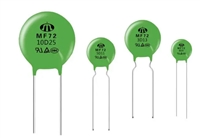| Source Url Status Check Date: | 2013-05-01 14:56:10.393 | 是否无铅: | 含铅 |
| 是否Rohs认证: | 不符合 | 生命周期: | Obsolete |
| 零件包装代码: | TSSOP | 包装说明: | 3 X 4.90 MM, MO-187BA, MSOP-10 |
| 针数: | 10 | Reach Compliance Code: | not_compliant |
| ECCN代码: | EAR99 | HTS代码: | 8542.39.00.01 |
| 风险等级: | 5.68 | 其他特性: | IT CAN ALSO OPERATE FROM A 5V NOMINAL SUPPLY |
| 标称带宽: | 4.8 kHz | 控制接口: | 2-WIRE SERIAL |
| 转换器类型: | DIGITAL POTENTIOMETER | JESD-30 代码: | S-PDSO-G10 |
| JESD-609代码: | e0 | 长度: | 3 mm |
| 湿度敏感等级: | 1 | 功能数量: | 1 |
| 位置数: | 256 | 端子数量: | 10 |
| 最高工作温度: | 125 °C | 最低工作温度: | -40 °C |
| 封装主体材料: | PLASTIC/EPOXY | 封装代码: | TSSOP |
| 封装等效代码: | TSSOP10,.19,20 | 封装形状: | SQUARE |
| 封装形式: | SMALL OUTLINE, THIN PROFILE, SHRINK PITCH | 峰值回流温度(摄氏度): | 240 |
| 电源: | 3/5 V | 认证状态: | Not Qualified |
| 电阻定律: | LINEAR | 最大电阻容差: | 55% |
| 最大电阻器端电压: | 5.5 V | 最小电阻器端电压: | |
| 座面最大高度: | 1.1 mm | 子类别: | Digital Potentiometers |
| 标称供电电压: | 3 V | 表面贴装: | YES |
| 标称温度系数: | 35 ppm/ °C | 温度等级: | AUTOMOTIVE |
| 端子面层: | Tin/Lead (Sn85Pb15) | 端子形式: | GULL WING |
| 端子节距: | 0.5 mm | 端子位置: | DUAL |
| 处于峰值回流温度下的最长时间: | 30 | 标称总电阻: | 2500 Ω |
| 宽度: | 3 mm | Base Number Matches: | 1 |
| 型号 | 品牌 | 描述 | 获取价格 | 数据表 |
| AD5170BRM50 | ADI | 256-Position Two-Time Programmable I2C Digital Potentiometer |
获取价格 |

|
| AD5170BRM50-R2 | ADI | IC 50K DIGITAL POTENTIOMETER, 2-WIRE SERIAL CONTROL INTERFACE, 256 POSITIONS, PDSO10, 3 X |
获取价格 |

|
| AD5170BRM50-RL7 | ADI | 256-Position Two-Time Programmable I2C Digital Potentiometer |
获取价格 |

|
| AD5170BRMZ100 | ADI | 256-Position, Two-Time Programmable, I<sup>2</sup>C Compatible Digital Potenti |
获取价格 |

|
| AD5170BRMZ2.5 | ADI | 256-Position, Two-Time Programmable, I<sup>2</sup>C Compatible Digital Potenti |
获取价格 |

|
| AD5170EVAL | ADI | 256-Position Two-Time Programmable I2C Digital Potentiometer |
获取价格 |

|
| AD5171 | ADI | 64-Position OTP Digital Potentiometer |
获取价格 |

|
| AD5171_15 | ADI | 64-Position OTP Digital Potentiometer |
获取价格 |

|
| AD5171BRJ100-R2 | ADI | 64-Position OTP Digital Potentiometer |
获取价格 |

|
| AD5171BRJ100-REEL7 | ADI | 64-Position OTP Digital Potentiometer |
获取价格 |

|
| AD5171BRJ100-RL7 | ADI | 64-Position OTP Digital Potentiometer |
获取价格 |

|
| AD5171BRJ10-R2 | ADI | 64-Position OTP Digital Potentiometer |
获取价格 |

|
| AD5171BRJ10-RL7 | ADI | 64-Position OTP Digital Potentiometer |
获取价格 |

|
| AD5171BRJ50-R2 | ADI | 64-Position OTP Digital Potentiometer |
获取价格 |

|
| AD5171BRJ50-RL7 | ADI | 64-Position OTP Digital Potentiometer |
获取价格 |

|
| AD5171BRJ5-R | ADI | 64-Position OTP Digital Potentiometer |
获取价格 |

|
| AD5171BRJ5-R2 | ADI | 64-Position OTP Digital Potentiometer |
获取价格 |

|
| AD5171BRJ5-RL7 | ADI | 64-Position OTP Digital Potentiometer |
获取价格 |

|
| AD5171BRJZ100-R2 | ADI | 64 Position OTP Digital Potentiometer |
获取价格 |

|
| AD5171BRJZ100-R7 | ADI | 64 Position OTP Digital Potentiometer |
获取价格 |

|
 热敏电阻型号命名规则的深度解析
热敏电阻型号命名规则的深度解析

 晶闸管控制角与电压关系专业性解答
晶闸管控制角与电压关系专业性解答

 平面型VDMOS与超结型VDMOS的雪崩耐量差异及选择指南
平面型VDMOS与超结型VDMOS的雪崩耐量差异及选择指南

 快速解读数据手册:HT7533引脚图说明、参数分析、技术特点
快速解读数据手册:HT7533引脚图说明、参数分析、技术特点
